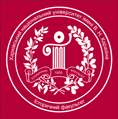What Causes Orthostatic Hypertension?
Orthostatic hypertension, likewise referred to as postural high blood pressure, is a problem characterized by a sudden rise in high blood pressure when a person stands from a resting or enerflex precio existing placement. This can result in a range of signs such as lightheadedness, faintness, as well as fainting. Recognizing the sources of orthostatic high blood pressure is critical in order to efficiently take care of and treat this condition.
Autonomic Nervous System Disorder
One of the principal reasons for orthostatic high blood pressure is disorder in the free nerve system. The autonomic nerves is accountable for managing numerous bodily functions, including high blood pressure. When this system breakdowns, it can cause unusual blood pressure responses, such as an extreme boost in high blood pressure upon standing.
Sometimes, autonomic nerves dysfunction can be triggered by underlying clinical problems, such as diabetes, Parkinson’s illness, or multiple system atrophy. These problems can interrupt the regular functioning of the free nerves, resulting in orthostatic high blood pressure.
Additionally, particular medications, such as alpha-blockers or beta-blockers, can additionally disrupt the autonomic nerve system and add to orthostatic high blood pressure. These drugs are frequently suggested to treat problems like hypertension, but they can often cause an abrupt decrease in high blood pressure when standing, resulting in orthostatic hypertension.
Dehydration
Dehydration is an additional usual reason for orthostatic high blood pressure. When the body is dehydrated, there is a reduction in blood volume, which can cause a fast increase in high blood pressure upon standing. This is because the body attempts to compensate for the reduced blood quantity by boosting the pressure to maintain appropriate blood flow to the brain and various other important organs.
Dehydration can occur for different factors, including poor liquid intake, too much sweating, throwing up, or looseness of the bowels. It is essential to stay correctly moisturized, particularly in heat or during physical activity, to stop dehydration-related orthostatic hypertension.
People with conditions that affect liquid balance, such as diabetic issues insipidus or adrenal deficiency, are at a boosted danger of establishing orthostatic hypertension because of dehydration.
Age-related Changes
As we age, our bodies undergo numerous changes, consisting of modifications in capillary and the free nerves, which can acuflex for ear contribute to orthostatic hypertension. Elderly people might experience reduced versatility in blood vessels, leading to reduced capability to restrict or dilate in reaction to modifications in body placement.
Furthermore, age-related changes in the free nervous system can result in impaired law of high blood pressure upon standing, leading to orthostatic hypertension. The precise systems behind these age-related modifications are still not completely recognized, yet they are thought to be multifactorial.
Elderly people are likewise more susceptible to various other risk variables for orthostatic hypertension, such as medicine use and underlying clinical conditions, making them much more prone to creating this condition.
Therapy and Administration
Orthostatic hypertension can considerably affect a person’s lifestyle and also raise their risk of drops as well as other problems. Consequently, handling and also treating this condition is vital.
- Liquid intake: Remaining properly hydrated is necessary in stopping dehydration-related orthostatic high blood pressure. Drinking water throughout the day and also enhancing fluid consumption during hot weather or exercise can help maintain proper blood quantity.
- Stay clear of abrupt movements: Slowly transitioning from a resting or existing placement to standing can help lessen the abrupt boost in blood pressure. This can be accomplished by taking a couple of minutes to sit up and after that stand gradually.
- Compression stockings: Using compression stockings can assist improve blood flow as well as lower the pooling of blood in the reduced extremities, therefore assisting to prevent orthostatic high blood pressure.
- Drug modifications: If medicines are causing or adding to orthostatic high blood pressure, a health care expert might think about adjusting the dose or switching to alternative medications.
- Way of living alterations: Engaging in routine workout, preserving a healthy and balanced diet regimen, and also staying clear of extreme alcohol consumption can contribute to total cardio wellness and aid take care of orthostatic hypertension.
- Medical interventions: In severe instances, where way of living alterations and also traditional actions do not successfully handle orthostatic hypertension, a health care specialist might consider suggesting drugs that help control blood pressure.
Verdict
Orthostatic high blood pressure is a condition defined by an abrupt increase in high blood pressure upon standing. Disorder in the free nerves, dehydration, and also age-related changes are some of the principal sources of this problem. Understanding these reasons is crucial in order to efficiently manage and also treat orthostatic hypertension. With appropriate therapy and lifestyle alterations, people with orthostatic hypertension can lead a much better lifestyle and reduce the risk of issues.






Comments are closed
Sorry, but you cannot leave a comment for this post.